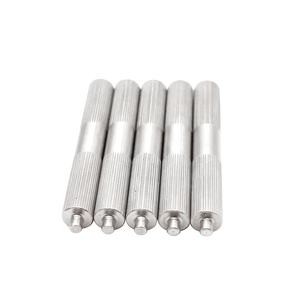Power liftoff (PTO) shafts are important elements in agricultural and industrial equipment, moving rotational power from a tractor or engine to connected applies. In many cases, modifying a PTO shaft by cutting it to a specific length is necessary to guarantee compatibility with various tools or to replace a damaged section. Appropriately cutting a PTO shaft calls for precision, the right devices, and adherence to safety and security procedures to preserve capability and prevent functional dangers. Below is an expert overview to performing this job properly.
(how to cut pto shaft)
The initial step is gathering the required tools and products. These consist of a tape measure or caliper for accurate dimensions, an irreversible marker or facility punch for marking, a top quality metal-cutting saw (such as a reciprocating saw with a bi-metal blade or an angle grinder with a reducing disc), a sturdy vise or securing system to safeguard the shaft, a documents or deburring tool, security goggles, handwear covers, and lubricating grease. Ensure the workplace is tidy, well-lit, and free of blockages to reduce threats.
Begin by figuring out the appropriate length for the PTO shaft. Consult the tools guidebook or gauge the existing shaft if replacing a damaged device. The shaft needs to be sized to enable full telescoping motion without excessive overlap or splitting up throughout operation. Incorrect length can lead to premature wear, resonance, or detachment. When the required length is developed, mark the cutting factors on both the inner and external tubes making use of a long-term marker. Double-check dimensions to prevent errors.
Safeguard the PTO shaft in a vise, guaranteeing it is debilitated to avoid movement throughout reducing. Position the shaft so the marked area is accessible and the reducing tool can run without blockage. If using an angle mill or reciprocating saw, line up the blade perpendicular to the shaft to attain a straight cut. Apply consistent, controlled pressure while reducing, preventing too much force that could damage the blade or misshape the steel. For telescoping shafts, cut both internal and external tubes individually, keeping equivalent sizes to protect balance and placement.
After reducing, remove the shaft from the vise and evaluate the cut finishes. Utilize a documents or deburring tool to smooth rough edges and eliminate sharp burrs. This action is critical to avoid damages to seals, bearings, or breeding components throughout reassembly. Wipe the shaft with a tidy fabric to get rid of metal shavings or debris. Apply a light coat of grease to the cut ends to inhibit deterioration and promote smooth telescoping action.
Reassemble the PTO shaft by reattaching the global joints or yokes, guaranteeing all retaining clips, screws, or pins are firmly fastened. Verify that the telescoping mechanism operates easily without binding. Before connecting the shaft to equipment, perform an aesthetic inspection to confirm architectural stability and alignment. Check the PTO system at reduced power initially, keeping track of for unusual resonances or noises that might suggest imbalance or imbalance.
Security preventative measures are extremely important throughout this procedure. Always put on protective eyeglasses and gloves to secure against steel fragments and rotating tools. Avoid loosened apparel or jewelry that might become entangled in tools. Never try to cut a PTO shaft while it is connected to a power source or under stress. Use cool cutting techniques specifically, as heat produced by torches or plasma cutters can warp the shaft, endangering its stamina and dimensional accuracy.
Common mistakes to avoid include imprecise measurements, unequal cuts, and ignoring to deburr sides. Rushing the procedure or making use of poor devices commonly results in expensive rework or tools failing. Always prioritize precision over speed, and verify each action prior to proceeding.
(how to cut pto shaft)
In recap, reducing a PTO shaft needs mindful planning, ideal tools, and strict adherence to safety and security guidelines. By following the laid out treatments– precise measurement, safe clamping, regulated cutting, detailed deburring, and organized screening– mechanical designers and service technicians can ensure customized PTO shafts provide reliable performance while reducing downtime and maintenance expenses. Routine inspection and maintenance of PTO systems even more improve operational safety and long life.


